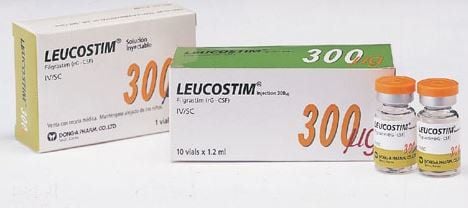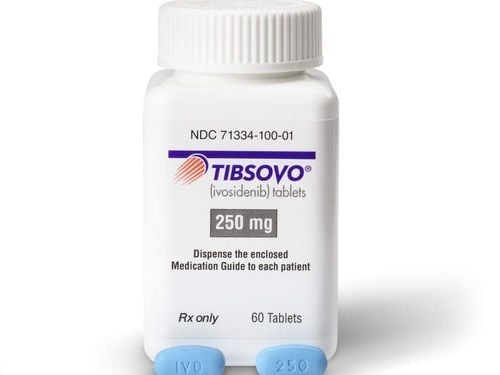This is an automatically translated article.
The article was written by MSc, Doctor Nguyen Manh Ha, Radiation Oncology Center - Vinmec Times City International HospitalMyeloblastoma is a malignant cancer that originates in the central nervous system. The disease tends to spread through the cerebrospinal fluid to other areas around the brain and spinal cord.
1. General
Myeloblastoma is a malignant tumor arising from the central nervous system (brain or spinal cord) that can occur at any age but is common in children and rare in adults, accounting for about 20% Brain tumors in children.
Myeloblastoma is common in the posterior fossa region of the brain or in the cerebellum, the cerebellum involved in complex muscle coordination, balance and movement
So far the cause of the disease is unknown
The tendency of the disease to spread is through the cerebrospinal fluid (CNS: the fluid that surrounds and protects our brain and spinal cord) to the areas surrounding the brain and spinal cord, it rarely spreads to areas other of the body. This is a type of embryonal tumor, which starts in embryonic cells in the brain, there are at least 4 subtypes of medulloblastoma based on different genetic mutations. Although myeloblasts are not inherited, Gorlin and turcot syndromes increase the risk of the disease.
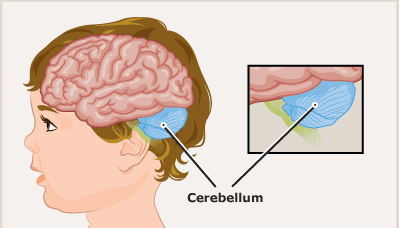
U nguyên bào tủy chiếm khoảng trên 20% các khối u não ở trẻ
2. Clinical signs and symptoms
These symptoms may be related to the tumor itself or due to increased pressure in the brain. Symptoms appear and gradually increase sometimes misdiagnosed with flu or viral fever :
Headache, nausea, vomiting; Fatigue, dizziness; Sagging one side of the face, tinnitus, neck tilt; Double look; Poor coordination, unsteadiness, and other concerns.
3. Diagnosis
The diagnostic process usually begins with a review of the clinical course and subclinical signs
Neurologic examination: assessment of the whole body, consciousness, alertness, coordination of movements, tone muscle strength, eye and mouth movements; Diagnostic imaging: Magnetic resonance imaging (MRI) is the most important help to accurately assess the location, size and invasion of the tumor, MRI of the brain and the entire spinal cord. Advanced techniques, such as perfusion MRI and magnetic resonance spectroscopy, may also be used. Magnetic Resonance Spectroscopy (MRS): determines the metabolic rate of tissues, helps distinguish healthy tissue, tumor tissue and can distinguish many different types of brain tumors. Needle biopsy: rarely used, most patients undergo surgery to remove the maximum tumor followed by pathology. A lumbar puncture: to look for malignant cells in the cerebrospinal fluid to help identify spinal cord metastases.
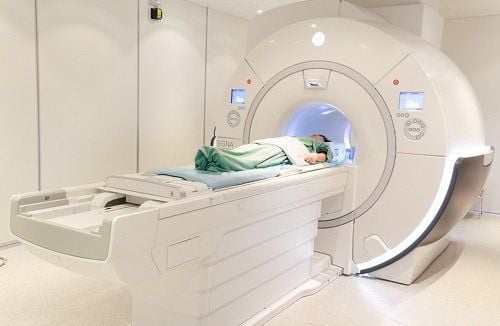
MRI não giúp chẩn đoán chính xác u nguyên bào tủy
4. Treatment
Treatment of myeloma usually includes surgery followed by radiation or chemotherapy, or both. Age and general health, the type and location of the tumor and its extent, and other factors play a role in treatment decisions. Options include:
4.1 Surgery to reduce CSF pressure in the brain
4.2 Myeloblastectomy Remove the tumor as much as possible, taking care not to damage adjacent tissue. But sometimes it's not possible to completely remove a tumor because medulloblastoma forms near important structures deep in the brain. .
4.3 Radiation Therapy Using high-energy X-rays or other particles to destroy tumors. Myeloblastomas are also very sensitive to radiation. As radiation therapy can affect the growth and development of the brain and spine of the child so approaches will be based on the age and characteristics of the tumor
For children > 3 years old will Radiation therapy to the entire cerebral spinal column and spine is then increased to the posterior fossa, to the tumor bed (if it has been thoroughly resected) or to the residual tumor area after surgery. For children under 3 years of age, radiation therapy is directed to the posterior fossa, tumor area or around the surgical site, total brain radiation should not be given to children < 3 years of age If indicated, radiation therapy is usually performed after surgery. surgery about 4-6 weeks
The acute side effects of radiation therapy are mainly fatigue, dermatitis, vomiting, loss of appetite.. Most of these side effects will disappear soon after the treatment is completed. Long-term side effects include growth problems, decreased hormone levels, and learning problems, especially higher education.
4.4 Chemotherapy Chemotherapy uses drugs to kill tumor cells. Usually, children and adults with myeloma receive these drugs as an injection into a vein (intravenous chemotherapy). Chemotherapy may be given after surgery or radiation therapy, or in certain cases, at the same time as radiation therapy. In some cases, relapse will be treated with high-dose chemotherapy and autologous stem cell infusion.

Hóa trị được sử dụng sau khi bệnh nhân phẫu thuật hoặc xạ trị u nguyên bào tủy
4.5 Marrow and Stem Cell Transplants Bone marrow transplantation can be used for children with recurrent myeloma. Hematopoietic stem cell transplants are cells taken from the bone marrow or from peripheral blood.
At Vinmec Times City Hospital's Oncology and Radiation Center, which has treated complicated cases since 2017, initially obtained positive results. The patient underwent surgery to remove the maximum tumor and then received adjuvant chemotherapy and radiotherapy. Difficult points in radiation therapy for patients are:
The patient is usually a young child, so it is difficult to lie still or coordinate during radiation therapy, sometimes requiring anesthesia; The projection field stretches from the beginning to the end of the sacroiliac area, so it must be divided into many plans that take a lot of planning and treatment time (usually 2-3 times more than other cases), involving many different diseases. organs in the body; Determining irradiated volumes requires precision, sometimes in collaboration with a radiologist who sits for hours. Because of these difficulties, very few radiotherapy centers in Vietnam implement treatment. At Vinmec Times City Hospital, Medollublastoma patients are treated with image-guided radiation therapy (IGRT) every day of treatment to ensure the most accurate dose delivery
Multiply 1 case treated at the Oncology - Radiation Center Treatment of Vinmec Times City Hospital
Case : T.Q. A 21-year-old male was admitted to the hospital because of headache and weakness in his right arm. The patient underwent surgery to remove the maxillary tumor followed by concurrent chemoradiotherapy. Radiotherapy techniques VMAT - SIB 36Gy to the entire cerebrospinal axis, 54Gy to the posterior fossa and 60Gy to the area of residual tumor after surgery.
Currently the patient is mentally better, no headache, no vomiting, the right hand has improved markedly, can hold a pen and write, we are continuing to give adjuvant chemotherapy to the patient.

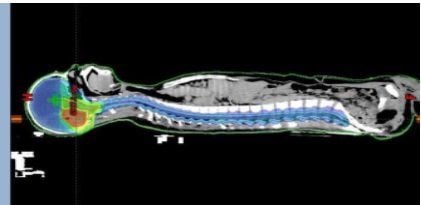
Phân bố liều điều trị
When you have symptoms of suspected disease, you should immediately go to a reputable medical facility to be examined and treated by specialist doctors. Vinmec International General Hospital is a high-quality medical facility in Vietnam with a team of highly qualified medical professionals, well-trained, domestic and foreign, and experienced.
A system of modern and advanced medical equipment, possessing many of the best machines in the world, helping to detect many difficult and dangerous diseases in a short time, supporting the diagnosis and treatment of doctors the most effective. The hospital space is designed according to 5-star hotel standards, giving patients comfort, friendliness and peace of mind.
Please dial HOTLINE for more information or register for an appointment HERE. Download MyVinmec app to make appointments faster and to manage your bookings easily.





